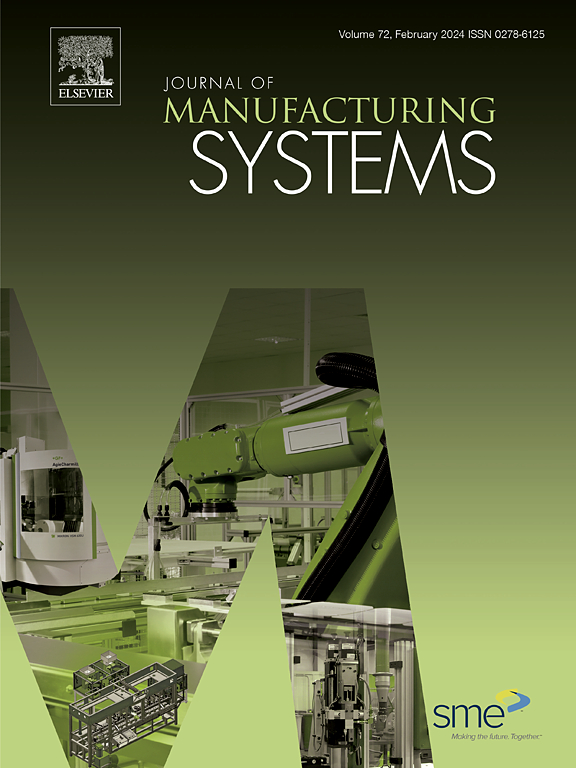A survey of large language model-augmented knowledge graphs for advanced complex product design
IF 12.2
1区 工程技术
Q1 ENGINEERING, INDUSTRIAL
引用次数: 0
Abstract
In the Human-AI collaboration rapid development era, the design and development of knowledge-intensive complex products should enable the design process with the help of advanced AI technology, and enhance the reasoning and application of design domain knowledge. Extracting and reusing domain knowledge would greatly facilitate the success of complex product design. Knowledge graphs (KGs), a powerful knowledge representation and storage technology, have been widely deployed in advanced complex product design because of their advantages in mining and applying large-scale, complex, and specialized domain knowledge. But merely KG and its related reasoning approaches still cannot fully support the ill-defined product design tasks. In the future complex product design, Human-AI collaboration will become a mainstream prevention trend. Large language models (LLMs) have outstanding performance in natural language understanding and generation, showing promising potential to collaborate with KGs in complex product design and development. Till 2024/03/04, only a few studies have systematically reviewed the current status of LLM and KG applications in the engineering field, not to mention a further detailed review in the complex product design field, leaving many issues not covered or fully examined. To fill this gap, 100 articles published in the last 4 years (i.e., 2021–2024) were screened and surveyed. This study provides a statistical analysis of the screened research articles, mainstream techniques of LLM & KG, and LLM & KG applications were analyze. To understand how KG and LLM could support complex product design, a framework of LLMs-augmented KG in advanced complex product design was proposed, which contains data layer, KG & LLM collaboration layer, enhanced design capability layer, and design task layer. Furthermore, we also discussed the challenges and future research directions of the LLM-KG-collaborated complex product design paradigm. As an exploratory review paper, it provides insightful ideas for implementing more specialized domain KGs in product design field.
面向高级复杂产品设计的大型语言模型增强知识图谱研究
在人类与人工智能协同快速发展的时代,知识密集型复杂产品的设计开发应借助先进的人工智能技术使设计过程得以实现,并增强设计领域知识的推理和应用。领域知识的提取和重用将极大地促进复杂产品设计的成功。知识图(Knowledge graphs, KGs)作为一种强大的知识表示和存储技术,因其在挖掘和应用大规模、复杂、专门化领域知识方面的优势,在高级复杂产品设计中得到了广泛的应用。但是,仅仅依靠KG及其相关的推理方法,仍然不能完全支持定义不明确的产品设计任务。在未来的复杂产品设计中,人机协作将成为主流预防趋势。大型语言模型(llm)在自然语言理解和生成方面表现突出,在复杂产品设计和开发中与KGs合作显示出良好的潜力。截至2024/03/04,仅有少数研究系统回顾了LLM和KG在工程领域的应用现状,更不用说在复杂产品设计领域的进一步详细回顾,还有许多问题没有被涵盖或充分研究。为了填补这一空白,我们对过去4年(即2021-2024年)发表的100篇文章进行了筛选和调查。本研究对筛选到的研究文章、法学硕士主流技术、法学硕士专业技术、法学硕士专业技术等进行了统计分析;KG, LLM &;分析了KG的应用。为了理解KG和LLM如何支持复杂产品设计,提出了一个llms增强的高级复杂产品设计KG框架,该框架包含数据层、KG和amp;LLM协作层、增强设计能力层和设计任务层。此外,我们还讨论了llm - kg合作的复杂产品设计范式面临的挑战和未来的研究方向。作为一篇探索性的综述性论文,本文为在产品设计领域实施更专业的领域知识框架提供了有见地的思路。
本文章由计算机程序翻译,如有差异,请以英文原文为准。
求助全文
约1分钟内获得全文
求助全文
来源期刊

Journal of Manufacturing Systems
工程技术-工程:工业
CiteScore
23.30
自引率
13.20%
发文量
216
审稿时长
25 days
期刊介绍:
The Journal of Manufacturing Systems is dedicated to showcasing cutting-edge fundamental and applied research in manufacturing at the systems level. Encompassing products, equipment, people, information, control, and support functions, manufacturing systems play a pivotal role in the economical and competitive development, production, delivery, and total lifecycle of products, meeting market and societal needs.
With a commitment to publishing archival scholarly literature, the journal strives to advance the state of the art in manufacturing systems and foster innovation in crafting efficient, robust, and sustainable manufacturing systems. The focus extends from equipment-level considerations to the broader scope of the extended enterprise. The Journal welcomes research addressing challenges across various scales, including nano, micro, and macro-scale manufacturing, and spanning diverse sectors such as aerospace, automotive, energy, and medical device manufacturing.
 求助内容:
求助内容: 应助结果提醒方式:
应助结果提醒方式:


